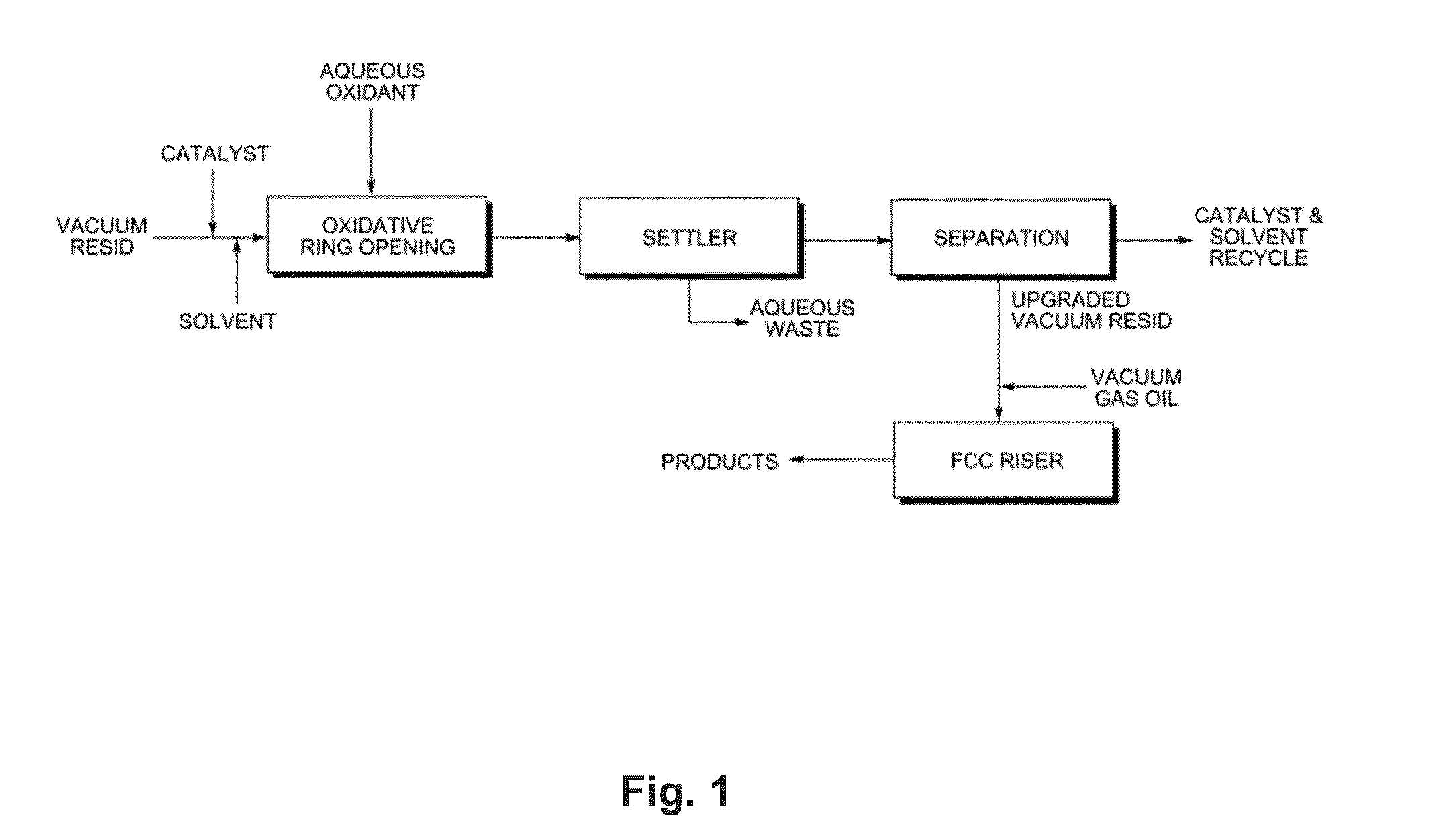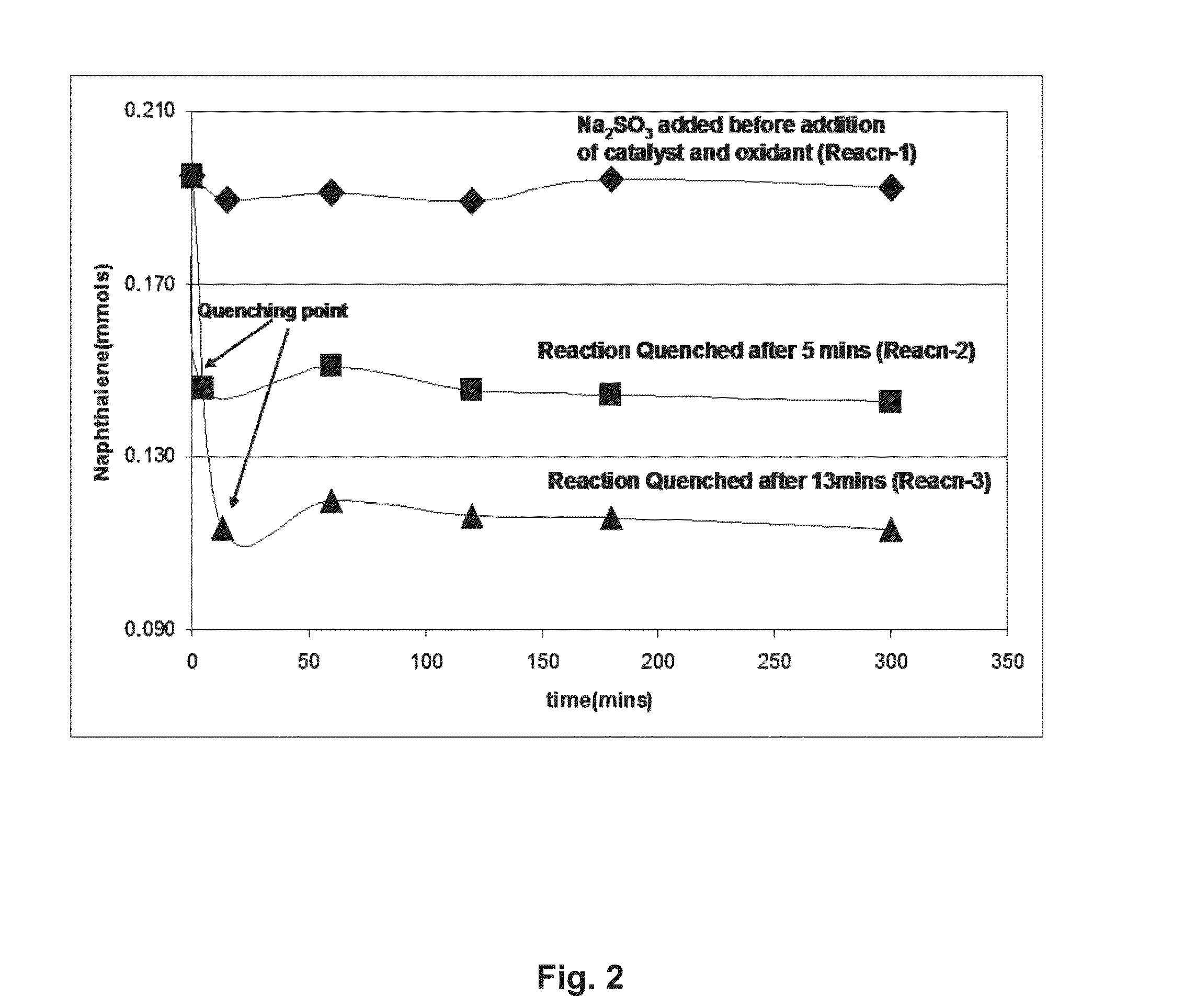Upgrading heavy oils by selective oxidation
- Summary
- Abstract
- Description
- Claims
- Application Information
AI Technical Summary
Benefits of technology
Problems solved by technology
Method used
Image
Examples
example 1
[0038]To demonstrate the effectiveness and controllability of the partial oxidation process on fused aromatic ring systems, naphthalene (0.100 g) was mixed in a water / acetonitrile solvent (10 ml / 6 ml) and 0.010 g of ruthenium trichloride trihydrate was added together with 1.2 g sodium periodate In an initial run, sodium sulfite reductant was added before the ruthenium catalyst and periodate oxidant were added. In two later runs, the reductant was added after 5 minutes and 13 minutes respectively. The results are shown in FIG. 2 which plots the naphthalene concentration, determined, against time for the three runs: the reductant is effective to terminate the oxidation reaction. The oxidant (periodate) is inactive without the catalyst (ruthenium) and the catalyst is inactive without the oxidant. FIG. 3 is a GC-MS chromatogram which shows the concentration of naphthalene as a function of time during the oxidation reaction: the disappearance of the naphthalene is shown as the oxidation ...
example 2
[0039]To demonstrate the selectivity of the oxidation on aromatic ring systems, four runs using the same oxidant / catalyst system as in Example 1 were made in the same mixed solvent. The aromatics used were ethylbenzene, naphthalene, phenanthrene and pyrene. The course of each reaction was plotted and the results are shown in FIG. 4.
[0040]The data demonstrate the selectivity of the chemistry which oxidizes aromatics according to the number of fused aromatic rings with the order of reactivity being 4R>3R>2R>1R even at longer reaction times with perylene (five fused rings) reacting as fast as pyrene (four rings).
example 3
[0041]The oxidation of phenanthrene carded out as in Example 2 was used to progress of the oxidation process on a fused multi-ring aromatic system. The course of the oxidation reaction with phenanthrene was monitored by GO-MS and the results shown in FIG. 5, indicating that the oxidation yields left over starting material and several oxidation products. The rings are oxidized and opened one ring at a time; the formation of the carbonyl and alkyl protons was corroborated by NMR.
PUM
 Login to View More
Login to View More Abstract
Description
Claims
Application Information
 Login to View More
Login to View More - R&D
- Intellectual Property
- Life Sciences
- Materials
- Tech Scout
- Unparalleled Data Quality
- Higher Quality Content
- 60% Fewer Hallucinations
Browse by: Latest US Patents, China's latest patents, Technical Efficacy Thesaurus, Application Domain, Technology Topic, Popular Technical Reports.
© 2025 PatSnap. All rights reserved.Legal|Privacy policy|Modern Slavery Act Transparency Statement|Sitemap|About US| Contact US: help@patsnap.com



